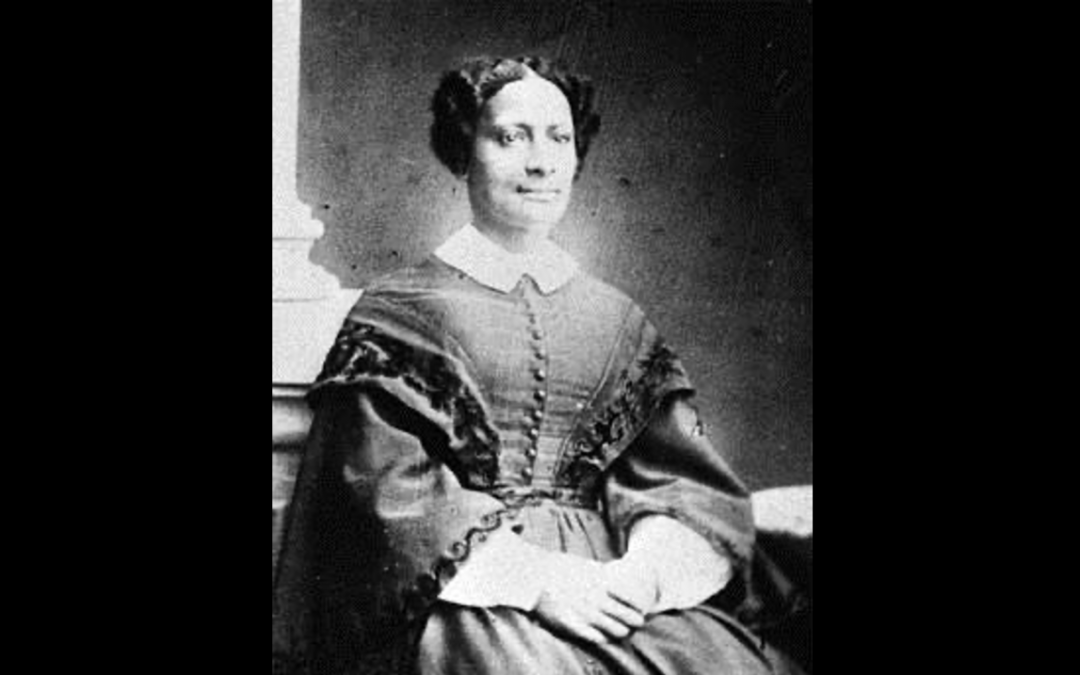by
_____
She was a talented, passionate speaker who delivered her first anti-slavery lecture at age 16.
She traveled with her brother and other abolitionists around the state of New York giving talks and gathering support for anti-slavery cause. She went on to address anti-slavery meetings in Massachusetts, Ohio, Michigan, and Pennsylvania.
William Lloyd Garrison, the prominent abolitionist, praised her “calm, dignified manner” and “earnest appeals to the conscience and the heart.”
Then in September 1858, she set sail for Liverpool, as an emissary of the Massachusetts Anti-Slavery Society. Her mission: to plead the ethical and economic case against “the monster evil” of American slavery, express her moral outrage, and persuade the British to support the abolitionist cause.
From 1859 to 1862, Sarah Parker Remond delivered 45 anti-slavery lectures in cities and towns across England, Scotland, and Ireland. Hundreds heard her “very eloquent style of address” — often the halls were overflowing. Newspapers on both sides of the Atlantic gave her lectures extensive coverage.
On this day in 1862, Remond spoke to the International Congress of Charities, Correction and Philanthropy, at Burlington House on Picadilly, in the heart of London.
It was the fifth day of the congress. Only a handful of women were among the many speakers — including the great educational reformer Mary Carpenter and the social reformer and the founder of modern nursing, Florence Nightingale.
The slaves, she said, were “the bone and sinew of all that makes the south prosperous.”
Remond’s lecture, “The Negroes in the US,” is searing rhetoric. She explained how, at just about the same time as the landing of the Pilgrim Fathers in 1620, a Dutch slave ship arrived in Chesapeake Bay with “twenty negroes stolen from Africa.”
That “sad hour for the African race” launched slavery in America, she said. “Then took root chattel slavery, which has produced such physical, mental, and moral degradation upon an unprotected and unoffending race.”
With the adoption of the Declaration of Independence in 1776, she said, enslaved people were denied their natural rights.
Remond incorporated statistics to convey the vast scale of slavery: 347,000 slave owners in the South, enslaving 3.2 million people on 80,000 cotton plantations.
She explained South’s economic dependence on the slaves — whom she described as “the bone and sinew of all that makes the south prosperous, the producers of a large proportion of the material wealth, and of some of the most important articles of consumption produced by any working class in the world.”
During the Civil War, Remond stayed in Britain, where she used her voice to argue that the British Parliament should offer assistance to the North. Officially, the United Kingdom remained neutral during the war.
Most ordinary Britons tended to support the Union. But many in Remond’s elite, upper-class audiences — especially in Northern manufacturing and industrial cities such as Liverpool and Manchester — were heavily dependent on on the cotton trade. Among them support for the Confederacy was widespread.
Many in Remond’s elite, upper-class audiences were heavily dependent on on the cotton trade. Among them support for the Confederacy was widespread.
After the war, Remond returned to the US, where she used her public voice to appeal for financial support for the millions of newly-emancipated freedmen.
At the age of 40, she moved to Italy, where she trained to become a physician and practiced medicine for 20 years.
She was in her 50s when she married to Lazzaro Pintor in Florence — a short-lived union. She never returned to the US.
Remond passed away in 1894 and is buried in Rome’s Non-Catholic Cemetery under her married name, Sara Remond Pintor.
Here is a plaque dedicated to her on a wall near the cemetery entrance, where she’s described as an “African American abolitionist and physician.”
I would like to add the words: “public speaker.”
© Copyright 2020
________________________________
Want to talk? Reach me at dana@danarubin.com



